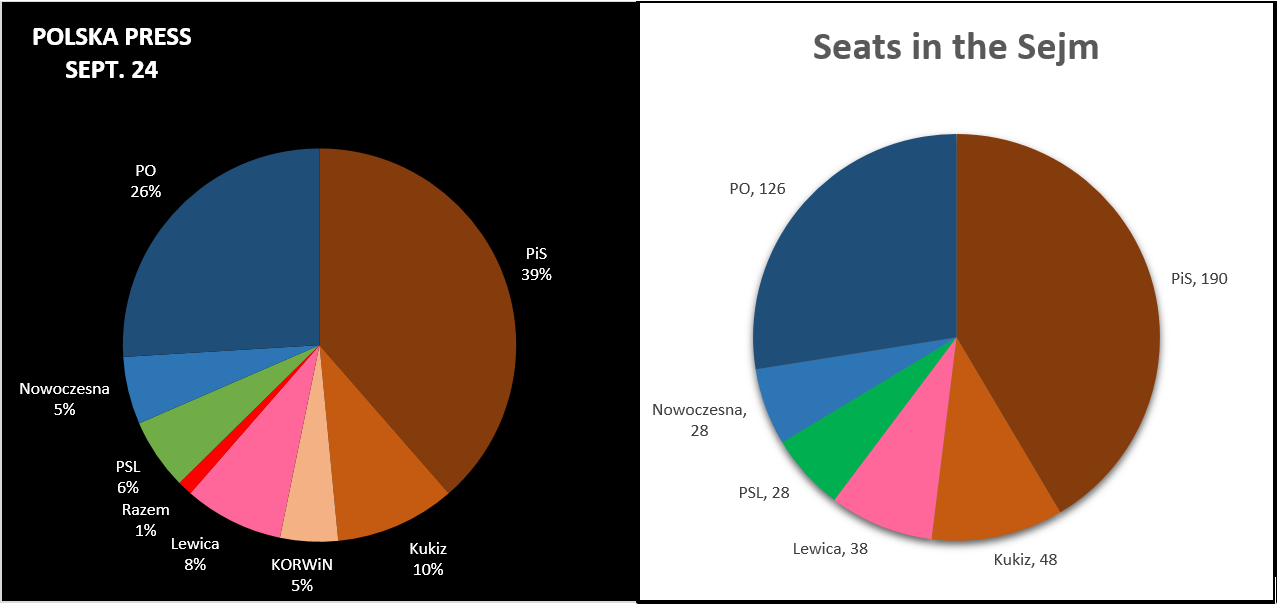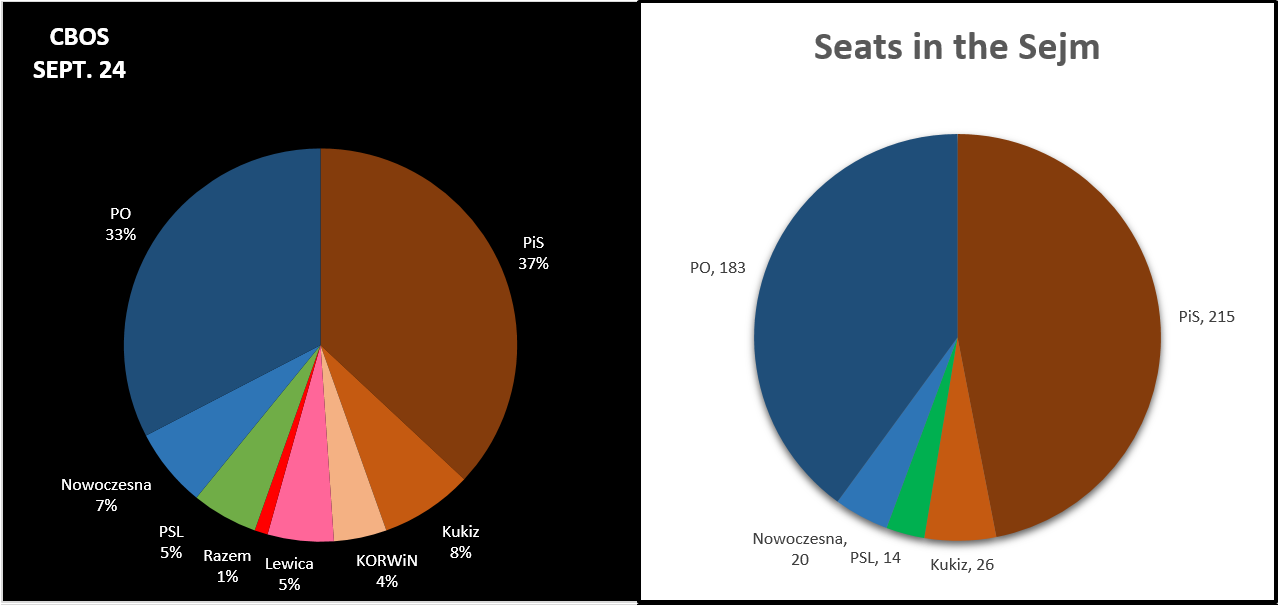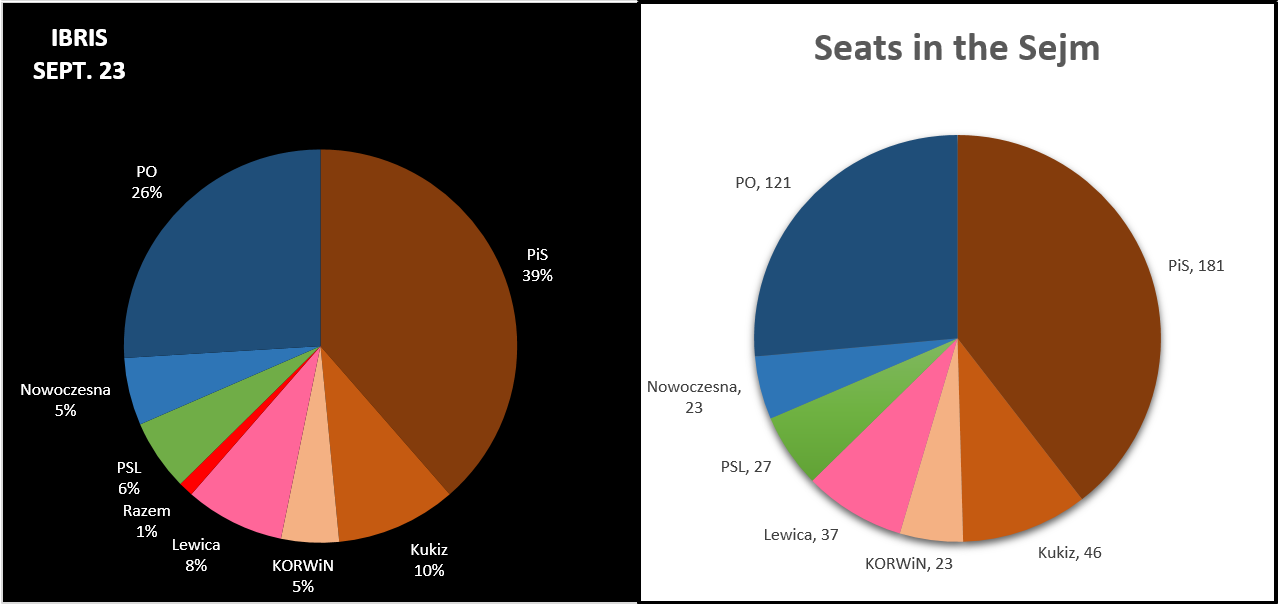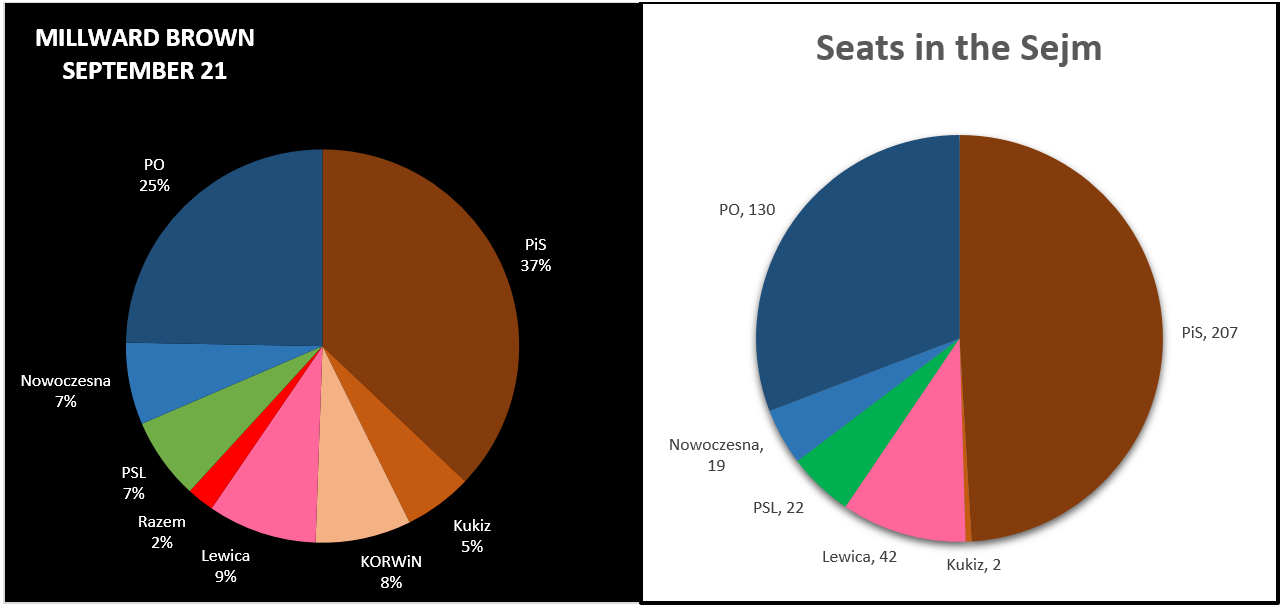The Polish Elections: One Month to Go
With exactly one month to go before the Polish elections, the odds still favor a victory for the far-right Law and Justice party (PiS). But there are still lots of variables. Setting aside all the substantive policy issues or ideological battles, one of the biggest question marks involves the math. The Poles use the so-called d’Hondt method, modified to require a minimum of 5% of the votes (for individual parties) or 8% (for coalitions). The calculations are complex, and if you are really interested click here for a full explanation.
The upshot is that even a small shift in the votes cast for a small party can make a huge difference. For example, currently the Polish People’s Party (PSL) is hovering around the 5% barrier. If they win 5.1% of the vote they will remain in the sejm and likely form an alliance with Civic Platform (PO). But if they win 4.9% of the vote they will not enter the sejm at all, significantly reducing the probability that PO could form a coalition government. The same goes for several parties: the libertarian Nowoczesna.pl (a likely coalition partner with PO), the nationalist Kukiz15 (a likely coalition partner with PiS), the leftist Lewica coalition (which therefore needs 8%), and the libertarian/nationalist/antifeminist/anti-EU/anti-immigrant KORWiN party (a likely coalition partner with PiS).
There are many possible constellations of power, and each would create a slightly different political dynamic. As I mentioned, the most likely result is a PiS-led coalition, but it matters a great deal whether they govern alone, or whether they need Kukiz15 and/or KORWiN to reach a majority. The last time PiS held power (2005-2007) they had to join with two small extremist parties, and the ensuing chaos paralyzed the government and led to its collapse. Similarly, it is possible for PO to retain power if all its potential coalition partners make the cut, but such a government would have to reconcile social democrats and libertarians, whose only shared cause would be keeping PiS out of power.
Anyway, here’s what the most recent surveys predict. They are all relatively close in terms of the overall percentages, but the balance of power in the sejm in each case would vary significantly.



